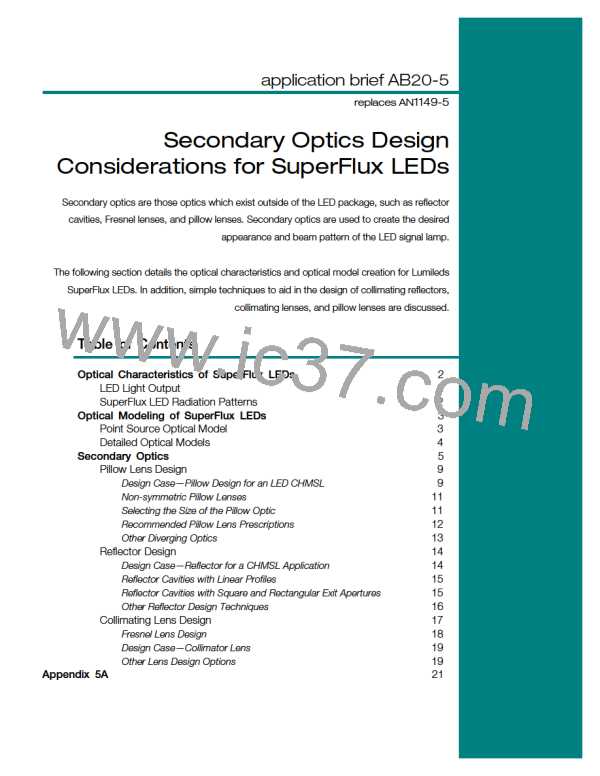Other Reflector Design Techniques
Many other methods exist to design reflectors
for LED sources.
rotationally symmetric reflectors by mapping the
flux contained within the source beam into the
desired output beam. This method breaks the
input beam into angular sections, each containing
a known percentage of the total flux. It is then
determined at what angle each of these flux
packets should be reflected to produce the
desired output beam. The profile of the final
reflector will consist of a series of straight
sections. As the number of flux packets
considered is increased, the number of steps in
the reflector increases, until a smooth curve is
approximated.
Nonimaging techniques focus on extracting light
from the LED source and redirecting it such that
the exit beam has the desired divergence. The
most common form of a Nonimaging reflector
used for LED applications is a truncated,
compound parabolic collector (CPC). Several
publications explaining the principles of
Nonimaging optics exist. One such text is High
Collection Nonimaging Optics by Welford &
Winston, 1989.
Detailed information on the reflector design
principles developed by William Elmer can be
found in The Optical Design of Reflectors by
William Elmer, 1989.
Other reflector design techniques have been
developed by William B. Elmer. One concept of
particular interest is a method for designing
Figure 5.27 Isocandela plots of a circular vs.
square reflector design.
Figure 5.26 Linear profile approximation of a
parabolic reflector (f = 0.66 mm).
16

 LUMILEDS [ LUMILEDS LIGHTING COMPANY ]
LUMILEDS [ LUMILEDS LIGHTING COMPANY ]